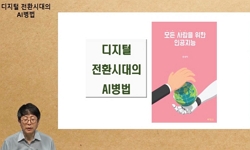은산분리 원칙은 우리나라 금융산업의 핵심적인 규제라 할 수 있고, 최근까지도 이러한 정책기조가 엄격하게 유지되어 왔다. 다만, 엄격한 은산분리가 글로벌 스탠다드를 형성하는 것은 아...
http://chineseinput.net/에서 pinyin(병음)방식으로 중국어를 변환할 수 있습니다.
변환된 중국어를 복사하여 사용하시면 됩니다.
- 中文 을 입력하시려면 zhongwen을 입력하시고 space를누르시면됩니다.
- 北京 을 입력하시려면 beijing을 입력하시고 space를 누르시면 됩니다.

은산분리 규제완화를 위한 소고- 미국과 일본의 은산분리 규제 동향을 중심으로 - = Reconsidering the Separation of Banking and Commerce - Comparative Analysis of Regulatory Relaxation in the United States and Japan -
한글로보기부가정보
국문 초록 (Abstract)
본 글에서는 은산분리 규제가 가진 현실적 위치를 구체적으로 파악하기 위한 논의를 진행해 보았다. 특히, 우리나라 은산분리 규제 체계의 타당성 검증을 위한 참고자료 제공을 목적으로, 미국과 일본의 은산분리 체계와 완화 경향을 구체적으로 살펴보았다. 이를 통해 현행 은산분리 규제의 시대적·국제적 정합성을 파악해 보고, 몇 가지 개별적인 소견을 제시하였다.
은산분리 원칙은 우리나라 금융산업의 핵심적인 규제라 할 수 있고, 최근까지도 이러한 정책기조가 엄격하게 유지되어 왔다. 다만, 엄격한 은산분리가 글로벌 스탠다드를 형성하는 것은 아니다. 오히려, 우리나라처럼 은산분리 자체를 법률로 엄격하게 제한하는 나라가 드문 편이다. 유럽이나 일본은 산업자본의 은행 소유에 관해 별도의 제한이 없다. 미국의 경우에도 5%까지는 허용하고, 5% 이상부터 25%까지는 미국 연방준비제도(Federal Reserve System, FRB)가 그 허용 여부를 판단하도록 하고 있다. 그러나 최근에는 사회 전반에 걸쳐 디지털전환(digital transformation, DX)이 확산되고 있다. 특히 금융과 비금융 분야가 상호 접근하고 융합하면서, 금융과 비금융 간 경계가 흐려지는 이른바 ‘빅 블러(big blur)’ 현상이 급속하게 진행되고 있는 실정이다. 이에 지금까지 금융과 비금융의 분리, 즉 은산분리 원칙에 대한 재검토 논의가 점증하고 있다. 우리나라 금융위원회에서도 이미 금산분리 완화 방침을 내세우고 관련 논의를 진행하고 있다.
본 글에서는 은산분리 규제가 가진 현실적 위치를 구체적으로 파악하기 위한 논의를 진행해 보았다. 특히, 우리나라 은산분리 규제 체계의 타당성 검증을 위한 참고자료 제공을 목적으로, 미국과 일본의 은산분리 체계와 완화 경향을 구체적으로 살펴보았다. 이를 통해 현행 은산분리 규제의 시대적·국제적 정합성을 파악해 보고, 몇 가지 개별적인 소견을 제시하였다.
다국어 초록 (Multilingual Abstract)
Recently, however, digital transformation (DX) has been rapidly expanding across all sectors of society. In particular, the boundaries between financial and non-financial industries are increasingly blurred due to their mutual approach and convergence—a phenomenon often referred to as the “big blur.” Against this backdrop, the principle of separating banking and commerce is being revisited, prompting growing discussions on its reassessment. Korea’s Financial Services Commission has already announced a policy to relax the separation between finance and commerce and is actively engaging in related discussions.
This article examines the current role and practical relevance of the Separation of Banking and Commerce regulation in Korea. Specifically, it aims to provide a reference framework for evaluating the validity of Korea’s regulatory system by analyzing the regulatory structures and trends toward relaxation in the United States and Japan. Through this comparative analysis, the article seeks to assess the temporal and international coherence of Korea’s existing regulatory framework and offers several individualized insights.
The principle of separating banking and commerce constitutes a core regulatory framework within Korea’s financial industry and has been strictly upheld to this day. However, such rigorous separation does not align with the global standard. Few count...
The principle of separating banking and commerce constitutes a core regulatory framework within Korea’s financial industry and has been strictly upheld to this day. However, such rigorous separation does not align with the global standard. Few countries impose strict legal restrictions on the integration of banking and commerce, as seen in Korea. For instance, neither Europe nor Japan imposes specific limitations on the ownership of banks by industrial capital. In the United States, industrial capital ownership is permitted up to 5%, with ownership ranging from 5% to 25% subject to approval by the Federal Reserve System (FRB).
Recently, however, digital transformation (DX) has been rapidly expanding across all sectors of society. In particular, the boundaries between financial and non-financial industries are increasingly blurred due to their mutual approach and convergence—a phenomenon often referred to as the “big blur.” Against this backdrop, the principle of separating banking and commerce is being revisited, prompting growing discussions on its reassessment. Korea’s Financial Services Commission has already announced a policy to relax the separation between finance and commerce and is actively engaging in related discussions.
This article examines the current role and practical relevance of the Separation of Banking and Commerce regulation in Korea. Specifically, it aims to provide a reference framework for evaluating the validity of Korea’s regulatory system by analyzing the regulatory structures and trends toward relaxation in the United States and Japan. Through this comparative analysis, the article seeks to assess the temporal and international coherence of Korea’s existing regulatory framework and offers several individualized insights.
동일학술지(권/호) 다른 논문
-
유럽연합 법제화 절차 연구- EU Taxonomy 제정 과정을 중심으로 -
- 한국기업법학회
- 금병욱
- 2025
- KCI등재
-
- 한국기업법학회
- 이효경
- 2025
- KCI등재
-
- 한국기업법학회
- 손영화
- 2025
- KCI등재
-
- 한국기업법학회
- 배효정(Bae Hyojung)
- 2025
- KCI등재




 KCI
KCI






